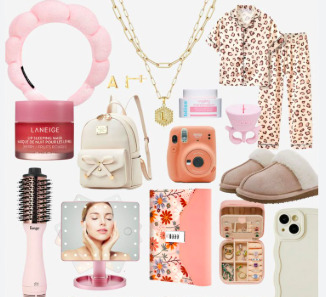
By Helena Dell’Armi
In 2020, you could not go online without seeing cow print or sage green in at least one item of clothing. More recently, bows became extremely present in clothing, accessories, and home items. Now, people try to get rid of these items through second-hand shops or donations. Trends often drive mass production and overconsumption. While these trendy items may offer a momentary gratification, the environmental cost often outlasts their popularity.
The question is: why do people chase trends? The answer is based on many factors, one being social media influence. Suppose an influential person randomly posts an article of clothing in the following weeks. In that case, all you will see on the fashion side of social media outlets is that item joining the spotlight. This leads to the public wanting to join in what is “trendy”. These trends are more than just style. They speak to people’s desire to belong and stay culturally current. Brands respond instantly to social media trends, pushing out cheaper, faster versions to meet demand. For consumers, the happiness is due to being part of the moment, owning something that everyone seems to have. This collective enthusiasm charges a pattern of fast buying and discarding, creating a cycle that the environment struggles to keep up with.
Manufacturing at scale demands huge resources. For fast-fashion garments, this means large amounts of water, energy, and synthetic fibres derived from fossil fuels. According to Business Insider, fashion production accounts for 10% of total global carbon emissions, and 85% of textiles end up in landfills each year. In addition, washing clothes releases 500,000 tons of microfibres into the ocean every year, equaling 50 billion plastic bottles. According to Oxfam’s blog, producing a single cotton shirt requires 5,400 bottles of water. Factories produce significant carbon emissions, and the rush to keep up with upcoming trends means cutting corners on sustainable practices.
Then waste comes into the picture. Trendy items are, by definition, a trend, something that does not last long, therefore temporary. Once the trend passes, products lose their appeal, no matter how functional they still are. Clothing ends up in donation bins, which is not the worst factor since the clothes are being passed down to others who need them; however, they do overflow after a period of time. As well as donation bins, clothes can end up in landfills where synthetic fabrics can take hundreds of years to break down. Plastic-based items such as clothes with large amounts of polyester, accessories, bags, or shoes contribute to growing microplastic pollution.
Microtrends encourage people to buy clothing designed for a brief moment. The result is millions of tons of textile waste each year. According to The Rediscovery Centre, consumption of textiles in Ireland is currently double the EU average, with 70,000 tonnes a year ending up in landfills. The appeal of a product led by media influence becomes so large that people want to belong to a group by owning a trending item; however, the trend dies down, and the cycle of waste continues.
Despite these challenges, there is a growing movement toward mindful consumption. Slow fashion brands and small businesses are gaining popularity, emphasising durability and ethical production. Consumerist consciousness has emerged as a principle for buyers tired of trend cycles. Upcycling communities are teaching people to rebuild old items into something new, extending their lifespan and producing less waste. People are buying more second-hand through Vinted, charity or vintage shops, which also leads to less waste.
Ultimately, the pull of the trend will not go away, nor does it have to. Trends inspire creativity and self-expression. However, embracing them with more consciousness is the key. Before “adding to cart” or shopping for something that is taking over the spotlight, consumers should ask themselves: Do I want this because I like it or because it’s trending? Will I use this in a year? While trends fade fast, their environmental damage can last a lifetime or more. True style and sustainability will last way longer than any trend.